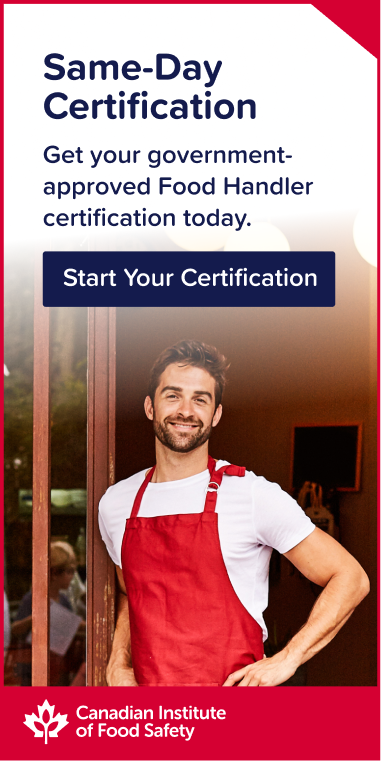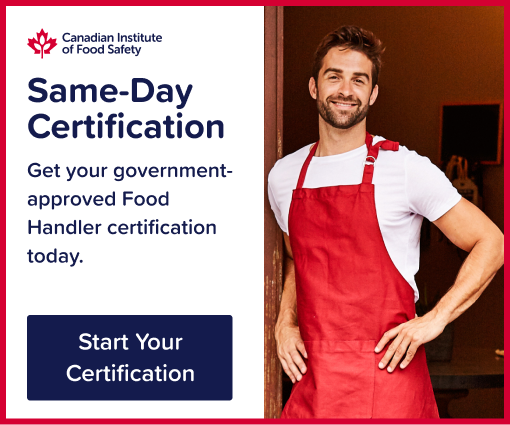
As the winter season takes hold in Canada, kitchens all over the country are busier than ever, preparing festive meals and celebratory snacks. The seasonal shift doesn’t just bring colder weather; it also brings unique challenges regarding food safety.
This detailed guide will explore the dos and don’ts of food handling at this time of year, emphasizing the importance of food safety knowledge when serving winter dishes for everyone to enjoy.
Why Winter Food Safety Matters
In Canada, the winter season is synonymous with holiday gatherings, comfort food, and an array of festive treats. However, it's also a time when food-related illnesses are particularly prevalent. The combination of large gatherings, extensive meal preparation, and storm-related power outages make winter a time for putting all your food safety knowledge into practice.
Let’s face it: nobody wants to be responsible for making people sick, especially during the holidays.
Managing Seasonal Food Safety Risks
Holiday Feasts and Bulk Cooking
Large gatherings often require you to cook significant quantities of food, which can lead to challenges like ensuring proper cooking, maintaining suitable temperatures and avoiding cross-contamination. Cooking in batches can make things more manageable, but you should also use a food thermometer to ensure every dish reaches a safe internal temperature.
Power Outages and Food Storage
Winter storms can lead to power outages, jeopardizing the safety of food stored in refrigerators and freezers, which is why learning how to manage these situations effectively is key. Methods include grouping food in the freezer to keep temperatures colder for longer and using ice packs to maintain refrigeration during extended outages.
Frozen Food and Safe Thawing Practices
With less fresh produce available, winter typically brings a greater reliance on frozen foods, and safe thawing is critical to prevent the growth of harmful pathogens. There are several thawing methods to choose from, including refrigerator thawing, cold water thawing, and microwave thawing. You must select the method based on the food type and time constraints at play.
Baked Goods and Raw Ingredients
Baking is a hallmark of the winter season in Canada, with cookies and cakes making a regular appearance at the table. However, many recipes include raw ingredients like eggs, which pose a salmonella risk if not handled correctly. Understanding the importance of using pasteurized products and proper cooking techniques to mitigate these risks is crucial.
Practical Food Safety Tips For Winter
1. Food Storage
It’s not uncommon for festive food to go uneaten, particularly at large gatherings. In order to save these leftovers for another day, you must employ suitable storage methods or risk becoming sick due to a food-borne illness.
The key to safe storage is time and temperature control. Perishable items, such as meats, poultry, and dairy products, should be refrigerated or frozen promptly, ideally within two hours. This will prevent harmful pathogens from developing, reducing the risk of food-borne illnesses. Refrigerators should be set to 4°C (40°F) or lower, and the ideal temperature for freezers is -18°C (0°F) or below.
Also, consider purchasing food-safe containers to help preserve food and keep it organized. Label items and be aware of expiration dates - leftovers should typically be consumed within three to four days. If you’re unsure regarding the shelf life of a refrigerated product, you may be better off storing it in the freezer.
2. Thawing
Thawing is a critical step in food preparation that involves careful temperature control. Planning ahead is essential, particularly for large items such as turkeys, which take considerable time to thaw safely in the refrigerator. It may be possible to use the cold water or microwave thawing method for smaller items.
3. Preparing High-Risk Foods
Raw food products such as meat, seafood, poultry or eggs are among the typical ingredients found in the kitchen during the holidays. Unfortunately, they all present an increased risk of cross-contamination – a leading cause of food-borne illnesses.
Raw ingredients and cooked foods must be stored and prepared separately to prevent cross-contamination. Hands should be washed thoroughly, and all equipment and utensils should be cleaned and sanitized when transitioning between tasks.
4. Cooking and Reheating
Cooking and reheating foods to the correct temperature is essential in order to eliminate harmful pathogens. Use a food thermometer to verify that your food has reached a minimum internal temperature of 74°C (165°F).
If you’re using a microwave to reheat leftovers, stir the contents at regular intervals to make sure the food is heated all the way through. Sauces and gravies should be heated separately from the rest of your meal. Never partially heat leftovers and return them to the refrigerator; this will allow harmful pathogens to develop.
Frozen food should be allowed to thaw completely before reheating it to the required temperature.
5. Dealing With Power Outages
If a severe winter storm is in the forecast, you can proactively prepare for a power outage by keeping a well-stocked emergency kit with essentials like ice packs, coolers, and shelf-stable foods.
In the aftermath of a power outage, it’s crucial that you carefully assess the safety of food items stored in your refrigerator or freezer. You can then decide which items to keep and which items to discard based on their temperature and exposure time.
Seasonal Food Safety in Commercial Kitchens
Online training programs are an effective way for commercial kitchen staff to develop an understanding of the food safety procedures that should be followed throughout each season,
Food Handler Training
Not only does Food Handler training cover the food safety principles mentioned in this article, but it also teaches participants how to apply them in a professional food service environment.
The Canadian Institute of Food Safety (CIFS) offers a Food Handler Certification Course that can be completed exclusively online, offering a quick and convenient way to develop safe food-handling skills while navigating the challenges of the busy holiday period.
The interactive course covers a wide range of essential food safety topics in detail, including cleaning and sanitizing, temperature control, personal hygiene and food contamination. This course equips participants with the knowledge and expertise required to ensure that everyone can have safe and enjoyable holiday dining experiences.
Ready to embrace the holidays with confidence? Enrol in the Food Handler Certification Course today, or get in touch to discover how CIFS training can help protect customers and keep your business running smoothly this winter.




